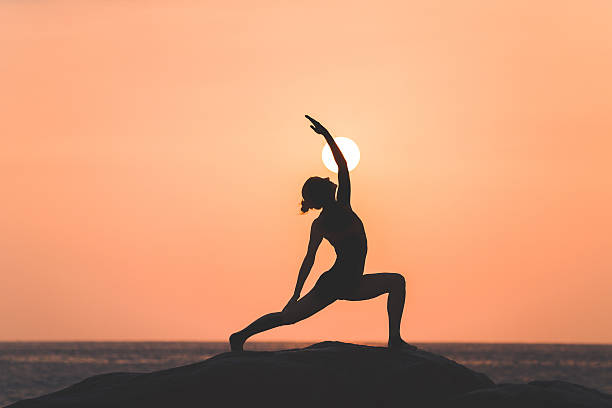I’ll be honest with you guys, I haven’t been great about giving myself rest days and it’s been showing. My therapist had to remind me today that sometimes you just need to take time, listen to the body, and give yourself some time to chill. So today, I want to talk about some of the signs you might be getting that let you know it’s time for a break.
Your body aches
Having body aches and pains is totally normal when you are working out. In fact, waking up a day or two after an intense workout and feeling aches in the area you worked out last is a good sign. It means the muscles are working to rebuild and grow stronger. But you know what else it is a sign of? Needing to rest that particular muscle group. There is a reason trainers say not to workout the same muscle group two days in a row (except for your abs). It’s because you have to give your muscles adequate time to repair from the damage you did to them in your workout! Working out the same muscles the next day could cause and injury and could set you back significantly.
So what if your entire body aches from a full day workout that has left you aching the second you get out of bed? It’s time for a full rest day. Sure that might mean yoga or stretching, but give your cardio and muscle training a break. After my first half-marathon I ached in muscles I didn’t even know I worked during running. So what di dI do? I took two days off to let myself fully recover. When I was ready to get back into it, I eased myself back into it to make sure that my muscles were ready to return to that activity.
I do plan to do a future blog post on the muscle recovery process after a workout, so look forward to that in a couple weeks!
You have repeated injuries or injuries that won’t heal
As I said earlier, when you overwork the muscles, you put yourself at risk for injury. Repeat training of the same muscle groups can cause for injury. Similarly, continuing to exercise an injured area of the body can delay recovery or could cause perminant damage that may result in something way worse, like the need for a surgery. When you are injured, it is best to rest that area as long as possible and when you finally feel healed, ease bak into exercise slowly to make sure that you are not going to reinjure yourself.
You’re not seeinig gains
A lot of people think that when they aren’t seeing gains it’s to the fault of the program they are doing. While that may sometimes be the case, it isn’t always the only case. Sometimes when we fail to see gains its because we are not completing a training program effectively. That might be because we are tired, our bodies are tired of exercise, and we need to rest the body to take on the next activity recovered and prepared.
It’s like trying to finish a 5k race after having completed a marathon. You are not going to perform well because you are already tired. When you go into an exercise day already tired and lagging, you aren’t going to perform as well and you aren’t going to see the gains you are aiming to.
Most exercise programs have rest days worked into them. Use them. I can tell you from experience, you should use them instead of trying to tiring yourself out for nothing. Your body will thank you, your trainer will thank you, and you will thank you!
You’re not having fun anymore
If you are dreadign your workout everyday, it’s time to evaluate why. Maybe you are doing really boring workouts that just aren’t fun. If that’s the case, you should definitely switch up your workout game (check out some of my older posts to see some of my recommendations). But if you’re like me, it probably isn’t because you don’t like the workouts you are doing, it’s more likley that you are just tired. Your body doesn’t want to do the movements anymore despite the fact you keep pushing yourself to do it, thus you aren’t having fun doing it anymore. What do you need? Take a day or two off and then see if you have a different attitude towards working out. Chances are you are going to! Chances are you are going to have missed it! Chances are, you are going to come back better!
You’re exercising for the wrong reason
This was the hot topic at therapy today. I got asked the big question of when I workout why am I working out and if I can tell when I’m doing it for the right reasons and when I’m doing it for the wrong reasons. And I realized, that when I get caught up in the negative things like my body image and how I feel in my own skin I start working out more and for the wrong reasons. I don’t do it for fun and because I’m trying to get stronger. I do it to burn calories and burn fat and my focus shifts to negative impacts and I grow even more tired and even more angry at myself.
So when it comes to working out, this is my advice. Ask yourself why you’re working out. If you are doing it because you want to increase your health, you want to get stronger, you want to have fun, or you love doing it then good! Do it! If you are working out for negative reasons and find yourself using words like “to get skinny”, “to burn calories”, or “to burn fat” take a step back from the workout and re-evaluate why you workout. If you keep finding yourself in that brain space, take a full on break from it and let yourself refocus on what the actual benefits of workout out are. Also, take the time to find programs that suite your needs. A lot of online youtube workouts use trigger words like burn fat and burn calories to pull you in, but that kind of culture can be dangerous and if you get caught up in those things, it’s best to avoid them all together (I also want to do a full blog post on this as well).
So ask yourself every day why you are exercising and if it is conducive to you in that moment. If it is, go ahead and workout, if it isn’t, give yourself a break.
Guys, it’s okay to have rest days. In fact, you should have rest days. Do some yoga. Do some stretching. Do something to benefit you. Or do nothing. Stay in bed and watch Netlix all day (but share your passwork with me because there are some shows I want to watch!!). Take it a day at a time and see what you need any given day. It doesn’t make you less of an athlete or ruin your journey. It resets the mind and body in ways you probably need more than you even know.
What is your favorite rest day activity? Let me know in the comments below!
Until next time,
Kat


